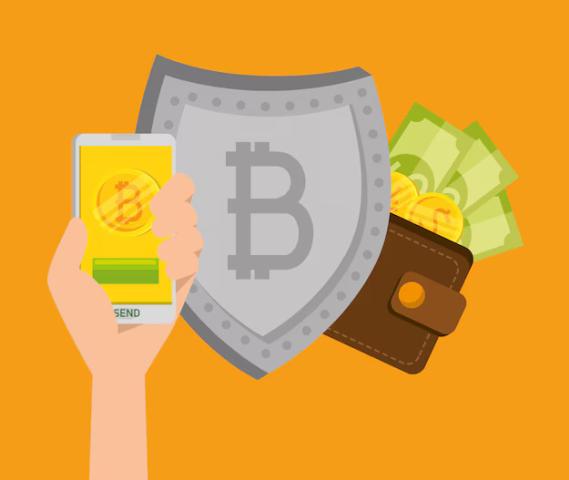With the rise of cryptocurrency adoption, the demand for secure and user-friendly crypto wallet apps has surged. A crypto wallet app allows users to store, manage, and transact with their digital assets securely.
Crypto wallets play a crucial role in the cryptocurrency ecosystem, offering numerous benefits and addressing key user challenges.
Crypto wallets are indispensable tools in the world of digital finance. They offer secure storage, facilitate transactions, enhance privacy, and provide users with full control over their digital assets
As the cryptocurrency ecosystem continues to grow, robust and user-friendly crypto wallets will only increase in importance, becoming a fundamental component of modern financial infrastructure.
Why Are Crypto Wallets Essential in the Digital Finance Ecosystem?
As cryptocurrency adoption grows, the need for secure storage solutions becomes paramount. Crypto wallets are crucial, offering numerous benefits and addressing key user challenges.
Secure Storage of Digital Assets
Crypto wallets securely store digital assets using advanced cryptographic techniques. They come in two main types:
Hot Wallets: These are connected to the internet and ideal for frequent transactions (e.g., mobile apps, desktop wallets).
Cold Wallets: Offline storage solutions (e.g., hardware wallets, paper wallets) offering enhanced security.
Ownership and Control: Unlike traditional banks, crypto wallets give users full ownership and control over their digital assets. This decentralization ensures complete autonomy without relying on intermediaries.
Facilitation of Transactions: Crypto wallets facilitate seamless cryptocurrency transfers, generating unique wallet addresses for quick and efficient transactions. Features like QR codes and user-friendly interfaces make transactions easy.
Enhanced Privacy: Crypto wallets enhance user privacy by enabling pseudonymous transactions. Advanced privacy features like coin mixing and stealth addresses further obscure transaction details.
Support for Multiple Cryptocurrencies: Modern crypto wallets support various cryptocurrencies, allowing users to manage multiple assets in one interface. This accommodates the expanding and diversifying cryptocurrency market.
Integration with Decentralized Applications (DApps): Crypto wallets integrate with DApps, providing access to blockchain-based services like DeFi platforms and NFT marketplaces, enabling diverse activities directly from the wallet.
Backup and Recovery Options: Crypto wallets offer robust backup and recovery options, like seed phrases or private keys, ensuring users can regain access to funds if a device is lost or fails.
Protection Against Fraud and Theft: Strong encryption and multi-factor authentication in crypto wallets provide high security against fraud and theft. Cold wallets are particularly resistant to hacking and features like transaction alerts and spending limits enhance security.
Financial Inclusion: Crypto wallets enable financial inclusion by providing banking services to unbanked and underbanked populations, allowing them to participate in the global economy and access financial services.
Future-Proof Financial Tools: As blockchain technology evolves, crypto wallets will play a more significant role in finance, incorporating features like smart contract integration, staking, and decentralized identity management.
Steps to Develop a Secure and User-Friendly Crypto Wallet App
Step 1: Market Research and Planning
Before diving into the development process, conducting thorough market research is crucial. Understand the current trends, user needs, and competitive landscape. Identify your target audience and their preferences. Based on this research, plan the features and functionalities your crypto wallet app will offer.
Key Activities:
Analyze competitor apps and identify gaps.
Conduct surveys and interviews with potential users.
Define your app's unique selling points (USPs).
Create a detailed project plan and timeline.
Step 2: Choose the Right Technology Stack
Selecting the right technology stack is critical for the success of your crypto wallet app. You'll need to choose both the frontend and backend technologies and the blockchain platform you'll integrate with.
Frontend Technologies:
React Native or Flutter for cross-platform mobile app development.
Swift for iOS development.
Kotlin for Android development.
Backend Technologies:
Node.js or Django for backend development.
PostgreSQL or MongoDB for database management.
Blockchain Platforms:
Ethereum for smart contract functionality.
Bitcoin for basic cryptocurrency transactions.
Binance Smart Chain for lower transaction fees.
Step 3: Design the User Interface (UI) and User Experience (UX)
A user-friendly design is essential for the success of your crypto wallet app. The UI/UX should be intuitive, secure, and easy to navigate.
Key Considerations:
Ensure a simple and clean design.
Access key features like sending, receiving, and viewing transactions easily.
Implement robust security features like biometric authentication and two-factor authentication (2FA).
Design a seamless onboarding process.
Step 4: Develop the Wallet Core Features
The core functionality of a crypto wallet app includes the ability to send, receive, and store cryptocurrencies. Additionally, consider implementing features like transaction history, multi-currency support, and QR code scanning for transactions.
Core Features:
User Registration and Authentication: Secure user registration and login, including 2FA and biometric authentication.
Wallet Creation and Management: Allow users to create and manage multiple wallets.
Send and Receive Cryptocurrencies: Enable users to send and receive cryptocurrencies using wallet addresses or QR codes.
Transaction History: Display a detailed history of all transactions.
Multi-Currency Support: Support multiple cryptocurrencies for added flexibility.
Step 5: Integrate Blockchain APIs
Integrating blockchain APIs is crucial for the functionality of your crypto wallet app. These APIs enable your app to interact with the blockchain for transaction processing and wallet management.
Popular Blockchain APIs:
BlockCypher: Provides APIs for Bitcoin and Ethereum.
Infura: Offers Ethereum and IPFS APIs.
Alchemy: Provides infrastructure for building on Ethereum.
Step 6: Implement Security Measures
Security is paramount in a crypto wallet app. Implement robust security measures to protect user data and funds.
Key Security Measures:
Encryption: Encrypt all sensitive data, both in transit and at rest.
Biometric Authentication: Use fingerprint or facial recognition for secure access.
Two-Factor Authentication (2FA): Add an extra layer of security for user accounts.
Regular Security Audits: Conduct regular security audits and penetration testing.
Step 7: Test the App Thoroughly
Testing is a critical phase in the development process. Before launch, ensure that your app is free of bugs and vulnerabilities.
Testing Activities:
Unit Testing: Test individual components for functionality.
Integration Testing: Ensure that all components work together seamlessly.
User Acceptance Testing (UAT): Get feedback from real users and make necessary adjustments.
Security Testing: Conduct thorough security testing to identify and fix vulnerabilities.
Step 8: Deploy and Launch the App
Once your app has passed all testing phases, it's time to deploy and launch it. Publish your app on the Apple App Store and Google Play Store, and ensure it complies with all relevant guidelines and regulations.
Deployment Activities:
Prepare all necessary documentation and app store listings.
Monitor the app's performance and user feedback post-launch.
Be ready to provide regular updates and support.
Step 9: Maintain and Update the App
After launching your crypto wallet app, continuous maintenance and updates are essential to keep it secure and relevant.
Maintenance Activities:
Regularly update the app to fix bugs and add new features.
Monitor for any security vulnerabilities and address them promptly.
Provide customer support to assist users with any issues.
Conclusion
To Create a crypto wallet app involves careful planning, robust development, and continuous maintenance. While this guide covers the essential steps, there are several additional aspects to consider for a successful crypto wallet app.
Ensure regulatory compliance by understanding and implementing AML and KYC requirements. Educate users on securing their wallets and understanding transactions, providing resources for new users.
Establish a reliable customer support system through multiple channels. Develop a marketing strategy using social media, influencer marketing, and content marketing to promote your app.
Plan for scalability and performance to handle growth without issues. Consider partnerships with blockchain projects and financial institutions, and integrate features like DeFi services, staking, and lending.
Continuously gather user feedback and release updates based on user suggestions and market trends. These considerations will enhance the functionality, security, and user satisfaction of your crypto wallet app, ensuring its success in a competitive market.
If you are looking to launch a powerful mobile solution, selecting the right Android app development company is essential for turning your vision into a reality. Also, when gearing up to launch your next big idea, hire Android app developers to ensure your application meets the highest standards of innovation and usability when gearing up to launch your next big idea.
















